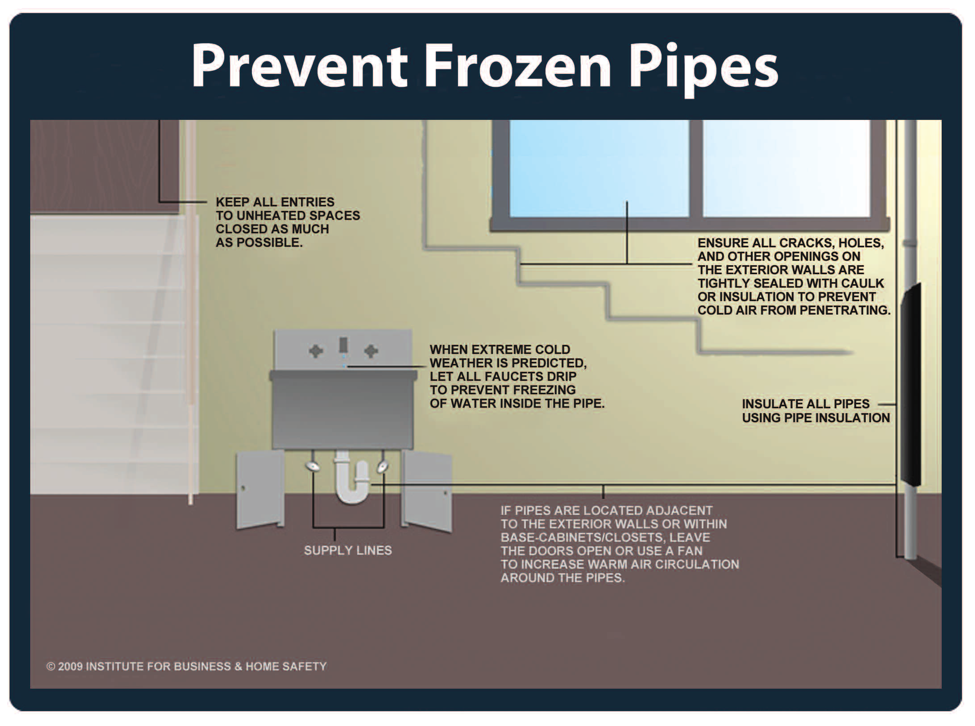Roofs, Water Pipes & Sprinklers
Winter brings a new set of hazards for your business, especially with changing weather patterns bringing heavier ice and snow events across wide swaths of the country … even in southern states. Ideally, you should begin preparing before the arrival of freezing temperatures, snow, and ice that can damage property and interfere with daily operations. But, it’s never too late to heed the following guidance from the Insurance Institute for Business & Home Safety (IBHS).
Roofs & Gutters
- Inspect and clear the roof and gutters of debris. Vegetation can accumulate, which can trap snow and ice, adding weight to the gutters.
- Check hangers, spikes, fasteners, seams, guards, and downspouts for securement. Heavy snow or ice can cause gutters to weaken and sag, leading them to break away from the building and allow for water intrusion.
- Take action to prevent ice dams (ridges of ice that form at the edge of a roof, especially gutters, or around drains and prevent melting snow from draining off the roof). The water that backs up behind an ice dam can leak into the building and cause damage to walls, ceilings, insulation, and other areas.
Pipes & Sprinkler
Frozen/burst pipes are the leading cause of property damage from winter weather
- Monitor interior building temperature by a central monitoring company to ensure prompt notification if the interior reaches low temperatures after hours or during power outages or idle periods.
- Confirm that the thermostat is functioning and the boiler/HVAC system has been serviced for the season. Monitor and maintain indoor temperature at 65 degrees or higher.
- Provide a reliable backup power source, such as a standby generator, to ensure continuous power to the building.
- Insulate pipes that are in attics, crawl spaces, and outside walls.
- Insulate and properly seal attic penetrations such as partition walls, vents, plumbing stacks, electric and mechanical chases, access doors, and all windows.
- Insulate recessed light fixtures in the ceiling to reduce heat entering the attic. Look for visible light from recessed light fixtures in the attic. If there is visible light, the lighting fixtures are not adequately sealed or insulated.
- Seal all wall cracks and penetrations including domestic and fire protection lines, electrical conduits, and other utility service lines.
- Ensure proper seals on all doors and windows. To find cracks and leaks, consider a basic building pressurization test. Seal gaps in windows and doors with caulk. Note: Taping glass does nothing to address the main issue: sealing out cold air.
- Place a monitored automatic excess flow switch on the main incoming domestic water line to provide early detection of a broken pipe or valve.

Sprinkler System Protection
- Sprinkler systems should be consistently monitored by a central station to provide early detection of a pipe failure.
- Install insulation and/or heat trace tape connected to a reliable power source on parts of wet sprinkler system piping (small branch lines and outdoor main lines) if the building interior may be exposed to freezing temperatures.
- UL-approved gas or electric unit heaters can be installed.

Be proactive! Develop a plan and execute!
For additional Loss Control tips please join our LinkedIn Group and visit BerkleyAssetProtection.com

